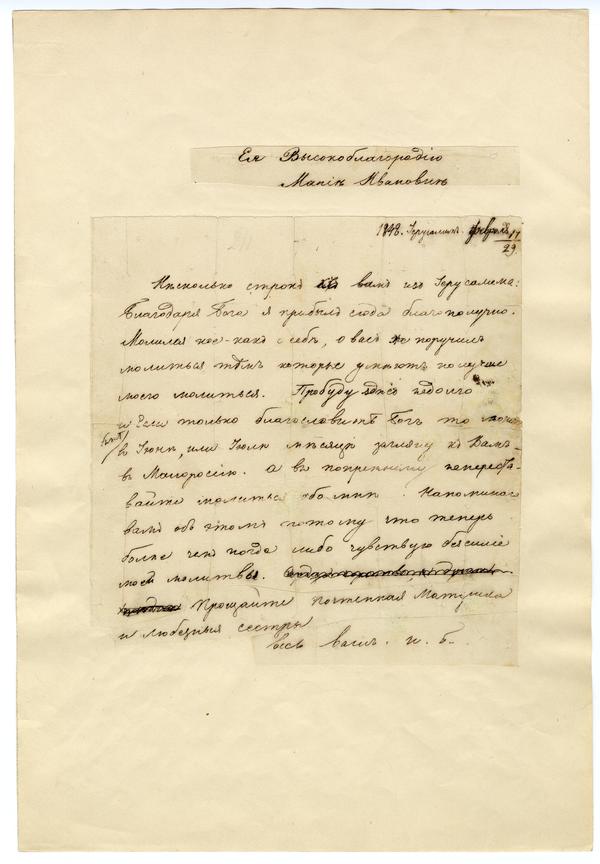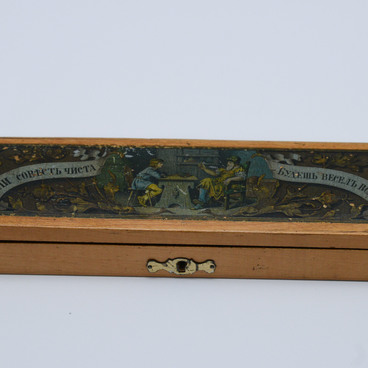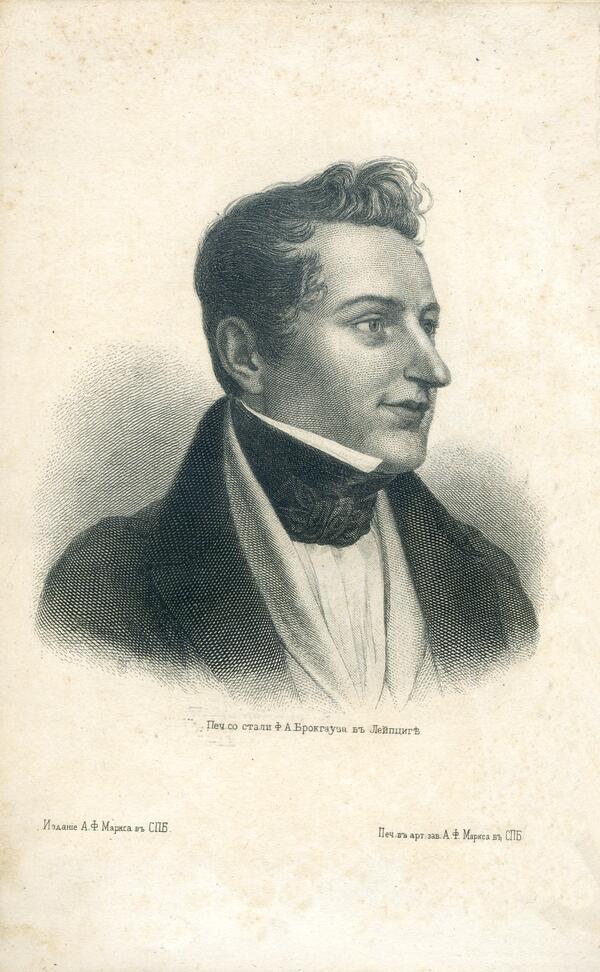A letter written by Gogol to his mother Maria Ivanovna and sisters Anna, Elizabeth, and Olga during a pilgrimage to the altar of the Holy Sepulchre in Jerusalem shows a difficult moment in the writer’s spiritual quest. For a long time, the whereabouts of this letter from Gogol was unknown, as were how and when it came to be in Fedin’s possession. It was, however, Konstantin Fedin’s careful treatment of the rarity that would preserve it for later generations.
The letter’s outer appearance with traces of cuts and punctures is unusual. The reason for the condition of Gogol’s letter was uncovered by Professor Valery Vladimirovich Prozorov of Saratov State University, who found the explanation in a magazine from 1902, where Vladimir Gilyarovsky, the well-known journalist and writer who prepared Gogol’s letters for publication, explained the following: ‘The letter from Palestine was punctured throughout for the purpose of disinfection: there was plague in Palestine at that time.’
In September 1841, Gogol completed work on the first volume of Dead Souls. Around the same time, he decided to visit the Holy Land. In 1842, he received a blessing for the trip and began preparing for the journey. At the time, he was reading a lot and writing prayers. Preparations for the pilgrimage took almost six years. He was expecting a great deal from the Holy Land and longed for spiritual renewal and a strengthening of faith.
While still in Russia, Gogol had the intention of praying at the Holy Sepulchre for the entire Russian land and compiled a list of ‘Whose Names to Remember at the Holy Sepulchre.’ During the trip, Gogol wrote letters to relatives and friends. From his correspondence with Zhukovsky we learn of the strong impression that praying at the Holy Sepulchre had on him. Here is what he wrote in one of his letters: ‘I fasted and communed at the Holy Sepulchre itself. The Liturgy was served in the burial place. How amazing it was! ’ From the correspondence with Zhukovsky, one learns how disappointed the writer was by the landscape in the Promised Land. After reading the Bible, completely different images had evolved in his imagination that had little in common with what he saw. An analysis of his impressions of the trip brought forward feelings that were mixed and melancholy. Complex spiritual work was underway within him. This is also evident from the letter to his mother and sisters, in which he would first write a phrase and then cross it out.
The letter’s outer appearance with traces of cuts and punctures is unusual. The reason for the condition of Gogol’s letter was uncovered by Professor Valery Vladimirovich Prozorov of Saratov State University, who found the explanation in a magazine from 1902, where Vladimir Gilyarovsky, the well-known journalist and writer who prepared Gogol’s letters for publication, explained the following: ‘The letter from Palestine was punctured throughout for the purpose of disinfection: there was plague in Palestine at that time.’
In September 1841, Gogol completed work on the first volume of Dead Souls. Around the same time, he decided to visit the Holy Land. In 1842, he received a blessing for the trip and began preparing for the journey. At the time, he was reading a lot and writing prayers. Preparations for the pilgrimage took almost six years. He was expecting a great deal from the Holy Land and longed for spiritual renewal and a strengthening of faith.
While still in Russia, Gogol had the intention of praying at the Holy Sepulchre for the entire Russian land and compiled a list of ‘Whose Names to Remember at the Holy Sepulchre.’ During the trip, Gogol wrote letters to relatives and friends. From his correspondence with Zhukovsky we learn of the strong impression that praying at the Holy Sepulchre had on him. Here is what he wrote in one of his letters: ‘I fasted and communed at the Holy Sepulchre itself. The Liturgy was served in the burial place. How amazing it was! ’ From the correspondence with Zhukovsky, one learns how disappointed the writer was by the landscape in the Promised Land. After reading the Bible, completely different images had evolved in his imagination that had little in common with what he saw. An analysis of his impressions of the trip brought forward feelings that were mixed and melancholy. Complex spiritual work was underway within him. This is also evident from the letter to his mother and sisters, in which he would first write a phrase and then cross it out.




